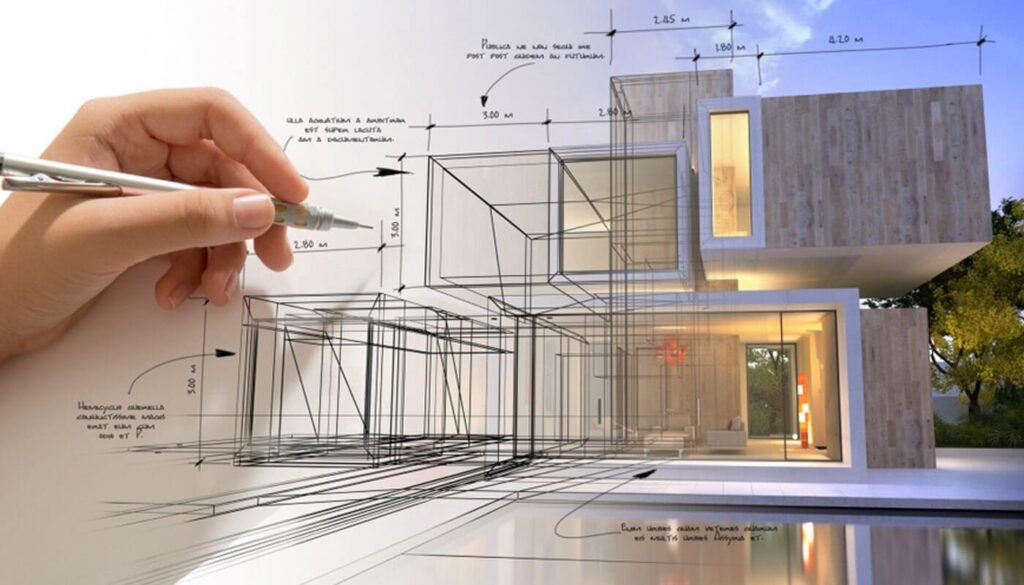Leading Reasons to Select CDA Architects for Your Residential or Commercial Designs
Leading Reasons to Select CDA Architects for Your Residential or Commercial Designs
Blog Article
An Extensive Introduction of Building Styles and Their Impact on Modern City Preparation and Growth
Architectural styles have actually long functioned as a mirror to the societal worths and technical advancements of their time, playing an important function fit contemporary city planning and advancement. From the magnificence of Neoclassicism to the utilitarian method of Brutalism, each style has actually introduced unique concepts that influence city aesthetic appeals and performance. As contemporary challenges arise, including sustainability and area demands, recognizing these historic frameworks becomes essential. The resulting discussion not just notifies future style practices but additionally elevates essential concerns about the balance in between heritage and advancement in our developing urban landscapes.
Historic Overview of Architectural Styles

As cultures transitioned via the Center Ages, Gothic style arised, identified by its verticality and complex outlining, mirroring the spiritual ambitions of the era. The Renaissance marked a revival of classical ideals, merging art and style in innovative manner ins which affected subsequent designs throughout Europe.

Today, architectural styles remain to advance, driven by globalization and sustainability concerns, showing a dynamic interplay between heritage and development. This historic introduction underscores the importance of design as a mirror of societal advancement and as a stimulant for city growth.
Secret Architectural Styles Explained
The variety of building designs shows the myriad impacts that shape our built atmosphere, each symbolizing distinctive characteristics and social relevances. Secret architectural styles consist of Timeless, Gothic, Baroque, Innovation, and Postmodernism, each representing special historical contexts and visual viewpoints.
Classic design, rooted in ancient Greece and Rome, emphasizes proportion, percentage, and the usage of columns (cda architects). In contrast, Gothic design, prospering between Ages, is defined by pointed arcs, ribbed safes, and flying buttresses, creating a heavenly top quality in cathedrals. Baroque design, emerging in the 17th century, is noted by magnificence, sophisticated ornamentation, and a vibrant interaction of light and shadow
Modernism, which got momentum in the early 20th century, prioritizes function over type, using new materials like steel and glass to develop minimal structures. Postmodernism, reacting versus the austerity of Innovation, welcomes eclecticism and historical referral, often incorporating lively components and irony.

Influence On Urban Planning
In forming the growth of cities, building designs considerably influence city planning choices. The selection of building design commonly dictates the looks, capability, and overall personality of urban atmospheres.
Moreover, architectural styles can influence zoning guidelines and land utilize policies. Urban coordinators have to take into consideration the prevailing building trends when creating areas, ensuring that brand-new advancements integrate with existing frameworks. This consideration promotes natural metropolitan landscapes and enhances neighborhood identity.
The execution of particular building styles can also affect socioeconomic aspects within a city. For example, premium contemporary layouts might draw in upscale homeowners and businesses, leading to gentrification, while extra budget-friendly housing options may focus on useful and lasting styles to fit diverse populations. Eventually, the interplay in between building designs and urban preparation creates vibrant cities that show both historic context and contemporary needs, forming the lived experiences of their residents
Sustainability and Modern Architecture
Architectural styles play a pivotal duty in resolving contemporary obstacles, particularly in the world of sustainability. As city areas broaden and environmental concerns increase, contemporary style significantly accepts sustainable layout principles that focus on power performance, source conservation, and minimal eco-friendly effect.
Contemporary building movements, such as biophilic style and environment-friendly architecture, advocate for frameworks that integrate with their surroundings, using all-natural products and advertising biodiversity. These styles commonly include renewable resource resources, such as photovoltaic panels and wind generators, to reduce reliance click this site on fossil gas and reduced carbon impacts.
Moreover, the integration of sophisticated innovations, such as clever structure systems, boosts energy management, optimizing resource usage while making sure passenger convenience. Cutting-edge water monitoring strategies, including rainwater harvesting and greywater recycling, further contribute to sustainable city settings.
Especially, sustainability expands past ecological concerns; it incorporates social and financial measurements also. By fostering neighborhood health and advertising inclusivity, contemporary architectural styles align with lasting growth objectives. The development of architectural practices continues to shape resilient cities that not only satisfy the requirements of the present however also guard the future for generations to come.
Area Interaction in Design
Area interaction in design works as an important bridge between engineers and the populations they serve, making certain that the developed environment mirrors the needs and aspirations of its individuals. This collaborative procedure welcomes neighborhood members to add their insights and choices, fostering a sense of possession and responsibility towards the look at here spaces they populate.
Efficient neighborhood engagement utilizes various techniques, such as workshops, studies, and public online forums, to collect diverse viewpoints. These methods promote a two-way dialogue, permitting architects to comprehend neighborhood contexts while empowering homeowners to voice their worries and wishes. This inclusivity not just improves the style quality however additionally advertises social equity by dealing with the one-of-a-kind challenges dealt with by marginalized teams.
Moreover, neighborhood interaction can lead to innovative options that could not emerge in a conventional design process. By incorporating regional knowledge and cultural worths, designers can create spaces that resonate more deeply with customers, enhancing usability and sustainability. Eventually, focusing on area involvement in design procedures leads to settings that support social communications, assistance well-being, and strengthen community ties, consequently playing a crucial duty fit modern-day urban landscapes.
Conclusion
Architectural styles have actually exceptionally influenced you can check here modern-day city preparation and development, mirroring advancing cultural and technological contexts. As cities proceed to grow and adapt, the recurring dialogue in between building heritage and modern layout principles will continue to be vital in creating comprehensive, dynamic rooms that improve quality of life and advertise social equity.
Report this page